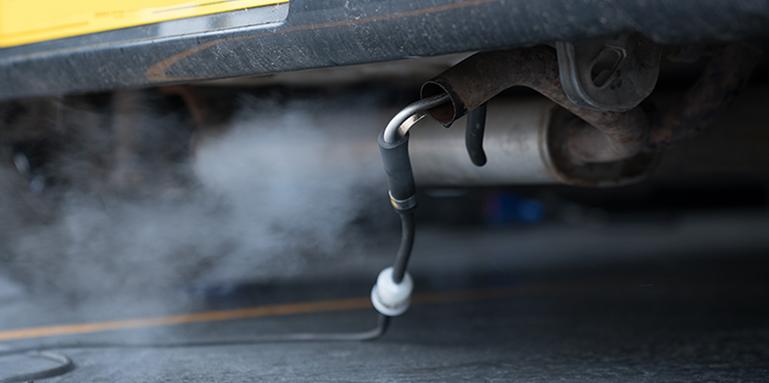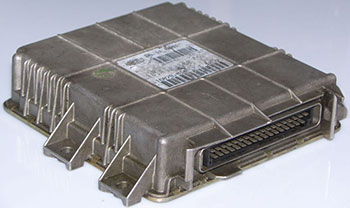The Diesel Particulate Filter (DPF) is a critical component in modern diesel engines, designed to reduce emissions by trapping particulate matter. Over time, these filters can become clogged, affecting engine performance and efficiency. Cleaning a DPF is essential to maintain optimal engine function and minimize emissions. There are several DPF Cleaning Methods used, each with its own advantages and suitability for different situations.

Understanding the Need for DPF Cleaning
Before delving into the various cleaning methods, it’s important to understand why DPF cleaning is necessary. The buildup of soot and particulate matter can restrict airflow, leading to decreased engine efficiency, reduced fuel economy, and potential engine damage. Regular cleaning helps prevent these issues and ensures the DPF operates effectively.
Different DPF Cleaning Methods
1. Passive Regeneration:
- Passive regeneration occurs during normal driving conditions when the exhaust temperatures are high enough to burn off accumulated soot. However, this method might not be effective in all driving situations, especially during short city trips with low-speed driving.
2. Active Regeneration:
- Active regeneration is a process where the engine management system adjusts parameters to increase exhaust temperatures deliberately, aiding in burning off accumulated soot. This process is automatic in most modern diesel vehicles but can fail if the driving conditions aren’t suitable.
3. Chemical Cleaning:
- Chemical cleaning involves using specially formulated cleaning agents or additives that are either introduced into the fuel or sprayed directly into the DPF. These chemicals help break down and remove accumulated soot, aiding in regeneration.
4. Heat Cleaning:
- Heat cleaning, also known as thermal regeneration, involves using high temperatures to burn off the accumulated soot. This method often requires specialized equipment that heats the DPF to extremely high temperatures to incinerate the particulate matter.
5. Pneumatic Cleaning:
- Pneumatic cleaning utilizes compressed air to dislodge and remove accumulated soot from the DPF. This method can be effective in certain cases but might not completely remove stubborn deposits.
6. Ultrasonic Cleaning:
- Ultrasonic cleaning involves using high-frequency sound waves in a cleaning solution to break down and remove particulate matter from the DPF. This method is known for its thoroughness but requires specialized equipment and expertise.
Factors Influencing the Choice of Cleaning Method
Several factors influence the selection of the most suitable DPF cleaning method:
- Severity of Blockage: The extent of the clogging or blockage within the DPF.
- Vehicle Usage: The driving patterns and conditions the vehicle is subjected to regularly.
- Cost and Accessibility: The availability and cost-effectiveness of different cleaning methods.
- Environmental Impact: Some methods might use harsh chemicals, which could impact the environment if not disposed of properly.
Commonly Asked Questions
1. Why does a DPF need cleaning?
Over time, a DPF accumulates soot and particulate matter, leading to blockages that can reduce engine efficiency and performance. Cleaning helps maintain optimal function.
2. How often should I clean my DPF?
The frequency of DPF cleaning depends on driving habits and vehicle usage. As a general guideline, it’s recommended to have it checked during regular servicing intervals or if warning lights indicate a blockage.
3. What are the signs that my DPF needs cleaning?
Warning lights on the dashboard, reduced engine performance, decreased fuel efficiency, or a higher frequency of DPF regeneration cycles are indications that a cleaning might be necessary.
4. Can I clean a DPF myself?
Cleaning a DPF typically requires specialized equipment and expertise. While some additives claim to assist in regeneration, professional cleaning methods are usually more effective.
5. How long does a typical DPF cleaning process take?
The duration can vary based on the method used and the severity of blockage. It can take anywhere from a few hours to a day or more, especially for more thorough cleaning methods.
6. Are there risks associated with DPF cleaning?
Improper cleaning methods or using incorrect tools/chemicals can damage the DPF or affect its performance. It’s advisable to seek professional services to avoid potential risks.
7. Does DPF cleaning guarantee improved performance?
Properly cleaning a DPF can restore engine performance, improve fuel efficiency, and prevent potential issues associated with blockages. However, results may vary based on the condition of the filter and the chosen cleaning method.
8. Can I prevent DPF issues without cleaning?
Regular maintenance, using high-quality fuel, and driving at higher speeds for extended periods (where safe and legal) can assist in passive regeneration, reducing the frequency of manual cleaning.
9. What’s the difference between active and passive regeneration?
Passive regeneration occurs during normal driving conditions when exhaust temperatures are high enough to burn off soot. Active regeneration is a deliberate adjustment by the engine management system to increase exhaust temperatures for cleaning.
10. How do I choose the right DPF cleaning method?
The choice depends on factors like the severity of blockage, vehicle usage, cost, accessibility to different methods, and environmental considerations. Consulting with experienced technicians is advisable.
11. Is it possible to drive with a blocked DPF?
It’s not advisable to drive extensively with a severely blocked DPF as it can lead to further engine damage and potential safety hazards. Seek professional help if warning lights indicate a blockage.
Read more: Effects Of A Blocked DPF On Fuel Efficiency
12. Are there any environmental implications of DPF cleaning methods?
Some methods might involve the use of chemicals or produce waste. It’s essential to choose methods that minimize environmental impact and dispose of waste properly.
Conclusion
Regular maintenance and timely cleaning of the DPF are crucial for diesel vehicles’ longevity and environmental friendliness. Each cleaning method has its merits and suitability depending on the specific circumstances. Consulting with professionals or experienced technicians is advisable to determine the most effective and appropriate method for your vehicle’s DPF cleaning needs.
By understanding the various DPF cleaning methods and their implications, vehicle owners can make informed decisions to ensure optimal engine performance while reducing harmful emissions for a cleaner environment.

